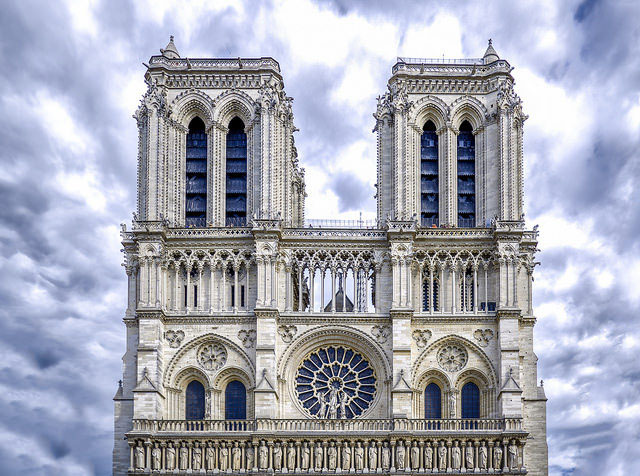
Putting the destruction of the Notre Dame Cathedral into proper perspective is, for all intents and purposes, almost a fool’s errand. Few buildings in the entire world are as recognizable to a Parisian as they are an Australian. For a structure that dates back to the 1100s, that has survived and endured wars and strife and internal and external struggle, this type of reverence comes with the territory.
“Notre Dame has meant so many different things to so many different people in so many different historic epics,” says Dr. Anne Henderson, a history professor at Notre Dame University of Maryland. “When I look at it, I see all that layered into it. I see the aspirations of medieval popes who wanted it to symbolize the power of the [Catholic] Church and the aspirations of monarchs who wanted to use it to win the obedience of their people. I’m not seeing one thing. I’m seeing the power of humans to create symbols and to invest them with meaning.”
On Monday, the roof of the cathedral burned down completely and its spire collapsed in a fire that officials are still trying to determine the cause of. Firefighters were eventually able to extinguish the blaze, but not before the cathedral suffered extensive damage. Buildings, perhaps more so than anything else in the world, can take different shapes depending on a person’s worldview, perspective, and global exposure. These ideas are formulated and passed down to us over decades and centuries. France has a rich and storied history, one that is woven into the civic pride of the nation and its citizens. Henderson says there isn’t really an American marker—or for that matter, save possibly for monuments in Greece, a global marker—that could put to scale this type of destruction. Part of this has to do simply with time. France has existed for long enough that the lore and significance of its landmarks has had more time to percolate. The cathedral—an integral part of this history that hosts seminal artworks and relics of vital religious significance—stands alone in its uniqueness.
“It symbolizes the deep continuity in the French nation, which they are immensely proud of,” Henderson says. “It’s profoundly important for the people of France to celebrate this, because for them, an incredibly important part of French identity is this idea of historical continuity and this very, very long and rich history.”
Henderson has been a student of history for her entire life—both her parents were also professors of European history, and she grew up tagging along with them on trips to Europe. She recalls, at 4 years old, being awestruck upon first seeing the cathedral, understanding even then its stance as a towering symbol for France. When she heard the news of the fire, she had a sense of melancholy around how destruction to this extent is often not an isolated incident.
“It reminded me simultaneously of millennia of history of civilizational monuments being destroyed,” Henderson says. “This is something that seems to happen to the works of man. They fall prey to natural disaster or to manmade disaster. There are so many icons that have been vandalized, wonders of the world that have been vandalized and destroyed over the years.”
And the Notre Dame Cathedral will be restored. Henderson notes that the cathedral has gone renovations and been refurbished before, though the circumstances surrounding what will now be a massive project are obviously extremely unfortunate in this case.
Some of the richest families and people in France have already pledged hundreds of millions of dollars for reconstruction efforts. NDMU focuses its philanthropic efforts towards less developed nations than France, but sends along a statement of support to Baltimore: “The School Sisters of Notre Dame express sympathy with Catholics around the world for the damage to this beautiful, historical, and religious icon.”
In short, the building is too essential a symbol for the world, and more importantly, for the people of France past, present, and future.
“Whether it’s religious or secular,” Henderson says, “whether it’s in the service of democracy or empire, [the Notre Dame Cathedral] has always been France.”